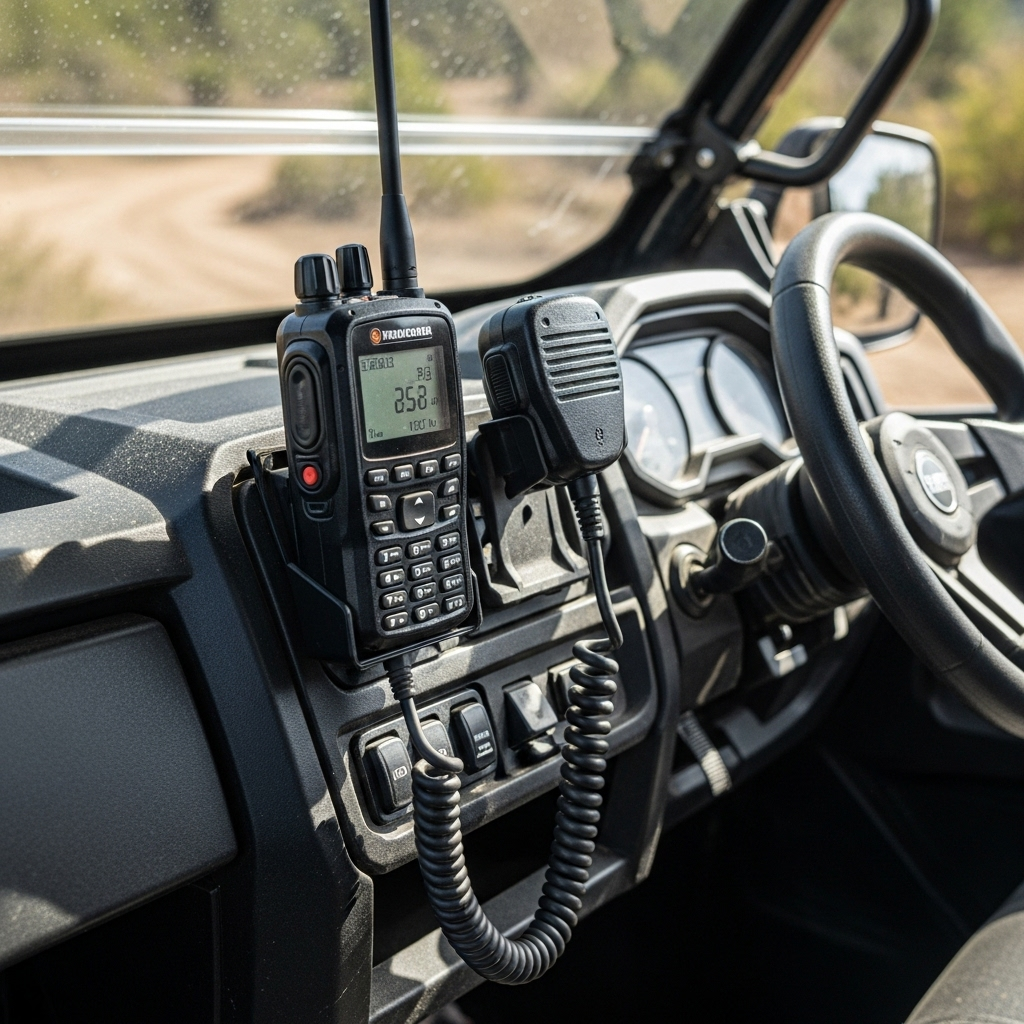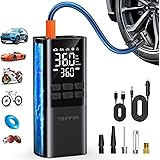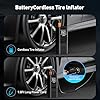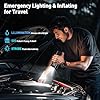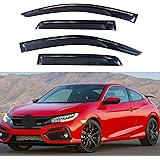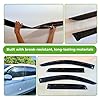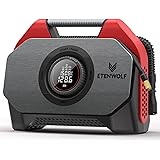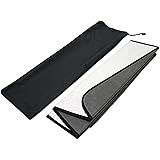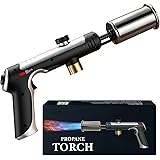Table of Contents
Finding the best 2 way radios for UTV is not just a matter of convenience—it’s a critical component of safety and coordination for any off-road adventure. When you’re miles from civilization, navigating treacherous terrain where cell phone signals are nonexistent, a reliable communication system becomes your lifeline to your group. Unlike standard walkie-talkies, a radio system built for a Side-by-Side must withstand extreme vibrations, dust, water, and engine noise while delivering clear, long-range communication. This comprehensive guide will navigate you through the different radio technologies, spotlight the top models and brands on the market, and explain how to integrate them with intercoms and headsets. We’ll provide you with the knowledge to choose a system that ensures you stay connected with your entire trail party, whether they’re in the passenger seat or leading the way in another vehicle miles ahead.
Why UTV Communication is a Unique Challenge
The off-road environment presents a set of harsh conditions that consumer-grade electronics are simply not built to handle. Understanding these challenges is the first step in selecting a radio system that won’t fail you when you need it most.
The physical punishment of off-roading is immense. A best 2 way radios for UTV must be engineered to resist dust and water intrusion. Look for ratings like IP67, which signifies complete dust protection and the ability to withstand temporary immersion in water. Furthermore, constant vibration can shake loose wiring and damage internal components, so a ruggedized housing and secure mounting are non-negotiable.
Electrically, the UTV is a hostile place. The engine, ignition system, and various electronic controls generate significant electrical noise that can manifest as a constant, annoying static in your headset. Combatting this requires a combination of proper grounding, shielded cables, and the use of noise-canceling microphones in headsets .
Finally, the landscape itself works against you. Dense forests, deep canyons, and mountainous terrain can dramatically reduce the effective range of your radio signal. While manufacturers may advertise a “25-mile” range, this is typically under ideal, flat, line-of-sight conditions . In the backcountry, a range of 1-5 miles is more realistic, and achieving even that requires the right combination of radio power and a well-installed antenna .
Understanding Radio Technologies: GMRS, FRS, CB, and Ham
Before choosing a specific model, it’s essential to understand the different types of radio services available. Each operates under different rules, offers different capabilities, and requires varying levels of commitment from the user.
GMRS (General Mobile Radio Service)
GMRS is widely considered the ideal choice for most UTV enthusiasts seeking a powerful and flexible communication solution . GMRS radios operate in the UHF band, which offers good penetration through trees and urban environments. To use GMRS, you must obtain a license from the FCC in the United States. The cost is nominal, and a single license covers you and your immediate family. Key advantages include:
- Higher Power Limits: Mobile GMRS units can transmit at up to 50 watts, while handhelds can go up to 5 watts, providing significantly greater range than FRS .
- Use of External Antennas: This is a critical feature for UTVs, as a roof-mounted antenna can dramatically improve range over a handheld’s small antenna.
- Dedicated Channels: GMRS offers a set of channels that are less crowded than FRS, leading to clearer communication.
FRS (Family Radio Service)
FRS is the technology used in common consumer walkie-talkies you find at big-box stores.
- No License Required: This is the primary appeal of FRS.
- Power Limitations: FRS radios are limited to 2 watts, which severely restricts their range, especially in challenging terrain .
- Fixed Antennas: You cannot attach an external antenna, limiting their effectiveness for vehicle-to-vehicle communication.
Verdict: FRS radios can work for keeping track of kids around camp, but they are not a serious tool for UTV trail communication.
CB (Citizens Band Radio)
CB radio was the old standard for truckers and off-roaders. It operates in the 11-meter (HF) band, which can experience more skip and interference but can also travel long distances under the right conditions. However, it has largely been supplanted by GMRS for UTV use due to GMRS’s generally clearer audio and the large size of CB antennas, which are impractical for navigating wooded trails.
Ham (Amateur Radio)
Ham radio offers the most power and flexibility, with the potential for very long-range communication using repeaters. However, it requires passing a technical exam to earn a license. While a technically viable option—and some enthusiasts with licenses do use them—the complexity and the fact that most off-road groups standardize on GMRS make it a less practical choice for the average user .
Table: Radio Service Comparison for UTV Use
| Radio Service | License Required? | Typical Power (Mobile) | Best For | Key Limitation |
|---|---|---|---|---|
| GMRS | Yes (FCC License) | 15W – 50W | Most UTV enthusiasts; groups needing reliable range | Requires a simple, paid license |
| FRS | No | 0.5W – 2W | Casual use around camp; short-range communication | Limited power and non-removable antenna |
| CB Radio | No | 4W | Traditionalists; areas where CB is still popular | Large antenna, prone to noise, less clear audio |
| Ham Radio | Yes (Exam Required) | 5W – 100W+ | Technical enthusiasts with a license; maximum range | Requires a technical exam; less common in off-road groups |
Top Contenders for the Best 2 Way Radios for UTV

Based on market presence, user reviews, and features tailored for the off-road environment, several brands and models consistently rise to the top.
Rugged Radios GMRS Series
Rugged Radios has built a reputation as a leader in off-road communications, offering complete kits designed specifically for UTVs . Their systems are popular because they are weatherproof and come with the appropriate plugs for a hard-wired intercom, making for a clean and integrated installation .
- Popular Models: The GMR25 (25 watts) and the higher-end G1 Adventure Series (with Bluetooth) are common choices .
- Key Features: Rugged Radios units are built to be weather-resistant and are designed to work seamlessly with the company’s own intercom systems and headsets. This “all-in-one” ecosystem approach is a major benefit for those who want a guaranteed-compatible, professional-grade setup.
- Best For: UTV owners who want a proven, off-road-specific solution and are willing to invest in a complete, high-quality system from a dedicated manufacturer.
Oxbow Gear Renegade X
The Oxbow Gear Renegade X takes a slightly different approach by heavily emphasizing Bluetooth connectivity while still functioning as a powerful two-way radio .
- Key Features: It features a built-in Bluetooth chip, allowing you to pair it with your favorite Bluetooth headsets, helmet intercom systems, or earpieces for a wireless experience . It transmits at the U.S. license-free limit of 2 watts and boasts an exceptional 36+ hours of battery life on a single charge, which is top-of-the-market .
- Rugged Design: Like its competitors, it’s built for harsh environments with a waterproof membrane sealing the mic and speaker to prevent freezing and moisture damage .
- Best For: Riders who already own Bluetooth helmet communication systems or who prioritize the convenience of a wireless setup without sacrificing the range of a two-way radio.
Retevis RA87 GMRS Mobile Radio Kit
Retevis offers a compelling value proposition with its RA87 GMRS Mobile Radio Kit, which is explicitly marketed as a UTV communication solution .
- Key Features: This radio boasts a 40-watt transmitter power, allowing for a strong signal and long range . The kit includes a stainless steel suction cup antenna, making for easy installation and removal . Its high-power UHF frequency is noted for strong penetration and clear audio .
- Best For: Budget-conscious UTV owners and DIY enthusiasts who are looking for high power output without the premium price tag of an off-road-specific brand. It’s an excellent option for building a custom communication setup.
Table: Top UTV Radio Model Comparison
| Model / Brand | Radio Service | Power Output | Key Feature | Best For |
|---|---|---|---|---|
| Rugged Radios G1/GMR25 | GMRS | 25W – 50W | Ecosystem integration, weatherproofing | Buyers seeking a complete, proven, off-road-specific kit |
| Oxbow Gear Renegade X | FRS/GMRS* | 2W | Bluetooth connectivity, 36+ hour battery | Riders wanting to use personal Bluetooth headsets |
| Retevis RA87 | GMRS | 40W | High power, value-priced complete kit | Budget-focused buyers and DIY installers |
| Note: Always check the specific model’s FCC certification for its authorized service. |
The Critical Role of Intercoms and Headsets
A radio is only half of the communication equation. For a fully functional system, you need a way for everyone in the vehicle to talk to each other and to the outside world. This is where an intercom system becomes indispensable.
An intercom unit acts as the central hub for your UTV’s audio. It connects all the headsets inside the vehicle, allowing driver and passengers to converse comfortably without screaming over the engine noise. Crucially, it also connects to your GMRS radio, allowing any occupant to transmit and receive external communications. Furthermore, most modern intercoms feature Bluetooth connectivity, allowing you to stream music from your phone or take calls through your headset .
Headsets for UTVs are not ordinary headphones. They are a critical piece of safety equipment that provides essential hearing protection from prolonged exposure to loud engine and wind noise, which can prevent long-term damage like tinnitus . They also feature noise-canceling microphones that filter out background noise, ensuring your transmissions are clear and understandable to other vehicles .
You have two main choices for headset connectivity:
- Wired Headsets: These are the most common and reliable option. They plug directly into the intercom system, so there are no batteries to charge and no risk of wireless interference. The downside is the physical cable, which some users find restrictive.
- Wireless Headsets: Systems like the Cardo Packtalk offer more freedom of movement but come with trade-offs. They are expensive, have limited battery life, and their standalone intercom range for vehicle-to-vehicle communication is typically limited to about one mile, which is often insufficient for off-roading . A hybrid setup, using a wireless headset that connects via Bluetooth to a hardwired GMRS radio, is a potential but more complex solution.
Installation and Optimization Guide
A proper installation is just as important as the quality of the equipment itself. A poorly installed radio will underperform and be prone to failure.
Step-by-Step Installation Overview
- Mount the Radio Unit: Choose a location that is protected from the elements as much as possible, such as under the dash or in a waterproof storage compartment. Ensure it is secure and will not interfere with pedals or your legs.
- Mount the Antenna: This is the most critical step for performance. The antenna should be mounted as high and as clear of obstacles as possible, typically on the roll cage or roof. The suction cup antenna mount included in kits like the Retevis RA87 is a popular and easy option . Never power on the radio without the antenna connected, as this can damage the radio.
- Wire to Power: Connect the radio’s power leads directly to the vehicle’s battery. This provides a clean power source and helps reduce electrical noise. Always include an in-line fuse on the positive lead within 18 inches of the battery terminal for safety.
- Install the Intercom and Headsets: Mount the intercom control unit and run the cabling for the headsets along the roll cage, using zip ties to secure it neatly.
Optimizing for Performance and Clarity
- Reducing Engine Noise: To suppress engine noise on your radio, ensure all connections are secure and the radio is properly grounded . You can also install an in-line noise filter on the power supply line to reduce electrical interference .
- Antenna Tuning: After installation, an antenna should be “tuned” or calibrated using an SWR (Standing Wave Ratio) meter. A properly tuned antenna ensures maximum power is transmitted as a signal rather than reflected back into the radio, which improves both range and radio longevity.
- Testing: Before heading out on the trail, test your system with another vehicle at a distance to establish a realistic range for your typical riding environment.
Making Your Choice: Final Recommendations
Selecting the best 2 way radios for UTV ultimately depends on your specific needs, group size, and budget. The right choice will provide peace of mind and significantly enhance your off-road experience.
For the serious enthusiast or anyone leading group rides, a hardwired GMRS radio and intercom system from a brand like Rugged Radios is the gold standard. This setup offers the highest reliability, the best audio quality, and the most robust integration for multi-passenger vehicles. While it represents a significant investment, often around $1,500 for a full setup, it “just works” without any fuss .
For riders on a budget or those who prefer a simpler setup, the Retevis RA87 provides exceptional value and high power. It’s an excellent starting point that can be paired with a separate intercom system later if needed.
For solo riders or those who already use high-end Bluetooth helmet systems, the Oxbow Gear Renegade X offers a clever bridge between the convenience of personal audio gear and the robust range of traditional two-way radio waves.
No matter which path you choose, prioritize a system that is built for the environment, offers clear hearing protection, and keeps you connected to your group. A reliable communication system isn’t just an accessory; it’s your trail lifeline.
Key Takeaways
- GMRS radios are the best 2 way radios for UTV use, offering a ideal balance of power, range, and legal external antenna use with a simple license.
- A dedicated intercom system is crucial for in-vehicle communication, hearing protection, and integrating with your radio.
- Rugged Radios offers integrated, off-road-proven kits; Oxbow Gear specializes in Bluetooth connectivity; and Retevis provides high-power, value-oriented solutions.
- Proper installation—specifically a well-grounded power connection and a high, clear antenna mount—is essential for performance and clarity.
- Always use noise-canceling headsets for clear communication and critical hearing protection on the trail.

